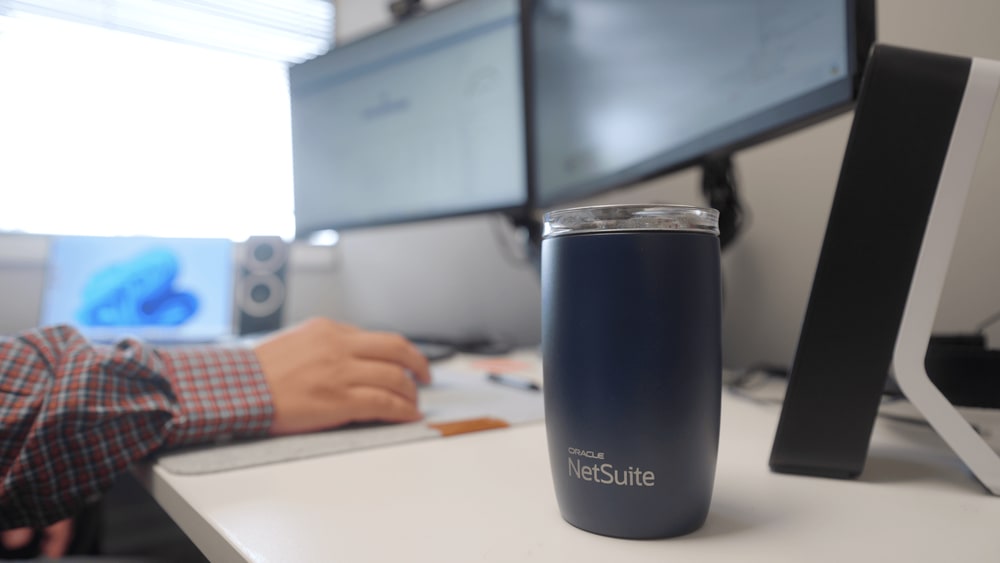This article contains a compilation of best practices and things to know about Bin Management, which can help improve inventory management and accuracy. Very often, one thing that is needed is to improve bin management in NetSuite.
This information is currently tailored to the use of the following features:
- Advanced Bin / Numbered Inventory Management
- Multi-Location Inventory
NetSuite Bin Management by Location
When you use the Multi-Location Inventory and Advanced Bin / Numbered Inventory Management features, note the following. You can enable bin management by location by setting only specific locations where bins will be used. You are not required to use bins at every location.
Setting a location to use bins is done on the Location record in the Use Bins checkbox.
Need a refresher on how "Location" and other key terms are defined in NetSuite, or how the Location records are designed to be leveraged? Check out the training article Classes, Departments, Subsidiaries, Locations, Oh my!
Creating Bin Records in NetSuite
Bin record numbers are associated with items and included on receiving and fulfilling transactions to keep track of inventory for each bin. Your bin numbers should correspond with actual locations in your warehouse so that your team knows where to find the associated items.
To create bins, go to Lists > Accounting > Bins > New.
Need to make an inventory transfer between locations? Check out this tutorial on how to Replenish a Location via Inventory Transfer in NetSuite!
Select to Use Bins on NetSuite Items
The Bin Management and Advanced Bin / Numbered Inventory Management features require that each item record is marked to use bins.
You can use a default bin number for non-bin items. (This excludes item types such as service and non-inventory items for which you cannot use bins).
To select an item to use bins:
- Go to Lists > Accounting > Items and click Edit next to your desired item.
- Under the Purchasing/Inventory subtab, check the Use Bins checkbox.
- Click Save.
Requiring Use Bins on NetSuite Item Records
It is possible to establish controls to ensure newly created items are set to use bins. A simple workflow can be used to default the Use Bins checkbox to check and disable users from editing it.
When using the Advanced Bin / Numbered Inventory Management feature, you are not required to associate bins with items before using bins on transactions.
Need a refresher on how to create a workflow in NetSuite? Check out this tutorial article on How to Create a NetSuite Workflow Using a Saved Search condition!
Associate Bins with NetSuite Items
You can assign bins to items on the item record by going to Lists > Accounting > Items and editing the desired item.
- Ensure that the Use Bins box is checked.
- Under the Purchasing/Inventory subtab, in the Bins sublist, select the location for the bin, select your bin, and specify whether the bin is preferred for that location.
- Save the item record. Your bin will now be available for selection on transactions.
You can also assign bins in bulk; depending on your current situation, you may want to use one of the methods below.
- Saved Search/Mass Update: You can use a NetSuite saved search or mass update to assign bins to items. However, this does not put any inventory into those bins. After you assign the bins items, you must put the inventory for those items into the associated bins using the Bin Putaway Worksheet.
- CSV import for items: You can do a CSV import to either add or update items with bin associations included. You will still need to use the Bin Putaway Worksheet to put the inventory into the associated bins after the import is complete.
- CSV for Inventory adjustment: If you do not wish to use the Bin Putaway Worksheet, you can use a CSV import for inventory adjustment to adjust your inventory out, then adjust the inventory back in with the inventory detail specified.
Want to schedule inventory updates such as bin associations in NetSuite? Prepare your inventory data in a CSV file and schedule updates to run in NetSuite at a specific time that works best for your business. Check out this CSV Import Scheduler for NetSuite!
NetSuite Bin Preferences
To set bin preferences, go to Setup > Accounting > Accounting Preferences > Items >Transactions subtab.
Use Preferred Bin on Item Receipts – this is a system-wide setting.
- When this preference is enabled, the Bin field on item receipts will default to the preferred bin instead of leaving the field blank.
- You must disable this preference if you want the Bin field to be left blank by default.
Require Bins on All Transactions Except Item Receipts – this is a system-wide setting.
- With this preference enabled, transactions that change inventory levels and include binned items must have a bin selected to save the transaction. (If there is not a bin field on a transaction, for example, on a PO, then bins are not required.) When this preference is enabled, Item Receipts do not require a bin selection.
Note: Editing a previously existing sale transaction that has a bin item but no specified bin requires bin specification on the transaction.
- Disable this preference to allow transactions that add inventory to be created that include items with no bin selected. Any new inventory added without a specified bin will appear in the Bin Putaway worksheet for your inbound manager to clean up.
By default, NetSuite always requires bin specification for any transaction where inventory is reduced.
Want to learn more about NetSuite Inventory Management preferences? Check out this trianing article Guide to NetSuite Inventory Management Preferences
Warehouse Processes and NetSuite Inventory Management
Remember that your NetSuite system will only work as well as your warehouse processes work. Nine times out of ten, inventory management issues discovered in the system are caused by flawed warehouse processes outside of the system; work with your warehouse managers to identify pain points or bottlenecks within these processes. Giving your management personnel additional tools to increase their visibility within the system will allow them to identify processes that may need to be adjusted.
Here are a couple of things to keep in mind for inventory management best practices:
1. The inbound manager should be in charge of ensuring that all newly created items have assigned bins; you can add placeholder bins for any items that may not use bins.
- For items that currently do not have Use Bins checked, I recommend reviewing them and ensuring that they either have a placeholder bin or a specific bin assigned to them to reflect their actual warehouse location.
- Ensure that items that should be inactive are marked as such.
- If you want to update items on a case-by-case basis rather than assigning them all bins at once, the inbound manager needs to ensure that all newly received items are assigned a bin so that inventory can be accurately put away.
2. The inbound manager should ensure that the Bin Putaway Worksheet is empty at the end of every day to ensure accuracy in inventory levels and location.
3. If you become aware of inventory discrepancies being caused by accounting during pricing adjustments or other processes, you may want to create a bin specifically for their use. Inventory managers can then monitor inventory levels within this bin to ensure no mistakes were made during accounting or sales processes.
- You can create bins in this fashion for other teams as well, if necessary. Still, the point is to increase your inventory manager’s visibility, which will help you identify the root causes of various inventory inaccuracies.
Working to resolve inventory discrepancies? You may find the tutorial article on Correcting On-hand Inventory in Multiple Bins in NetSuite to be helpful.
NetSuite Bin Management Q&A
Can we require bins to be selected on transactions (including item receipts)?
You can require bins on transactions (see NetSuite Bin Preferences); however, you cannot require bins on item receipts.
- The bin putaway worksheet can be used to account for inventory that is received without a designated bin.
- You can default items to be received into their preferred bin on item receipts (the user can still remove the preferred bin or select a different bin). This would take some data management to ensure all items have a preferred bin at each location.
Does unchecking Use Bins on item records cause the connection of previously associated bin records to be lost?
Yes, unchecking Use Bins on item records causes the connection of previously associated bin records to be lost. You should restrict users' ability to uncheck this field so that it does not happen again. This can be done using the same workflow that would require Use Bins on new items.
Will ensuring the correct use of bins improve our cycle counting issues?
Absolutely! Following bin best practices will improve issues with cycle counting as it will greatly increase the accuracy of the inventory in the system. Remember that ensuring best practices are followed in the warehouse is crucial to maximizing inventory accuracy.
Will bins be required on drop-ship POs?
Inventory detail is not required on native drop-ship POs as long as the items are not received into inventory. Dropship order items do not commit and inventory detail is not required for fulfillment of these orders.
Want to Simplify Inventory Counting and NetSuite Bin Management?
Check out NetSuite Physical Inventory Count, an Inventory Management Solution for NetSuite ERP!

While inventory counting functionality, such as that outlined in this article, is natively available in NetSuite, there are some limitations to what it can do. NetSuite Physical Inventory Count makes it easier to count regularly and flexibly in a real-world scenario, whether you have warehouses, storefronts, or both!
Got stuck on a step in this article?
We like to update our blogs and articles to make sure they help resolve any troubleshooting difficulties you are having. Sometimes, there is a related feature to enable or a field to fill out that we miss during the instructions. If this article didn't resolve the issue, please use the chat and let us know so that we can update this article!
Oracle NetSuite Alliance Partner & Commerce Partner
If you have questions about how our team can support your business as you implement NetSuite or SuiteCommerce, feel free to contact us anytime. Anchor Group is a certified Oracle NetSuite Alliance Partner and Commerce Partner equipped to handle all kinds of NetSuite and SuiteCommerce projects, large or small!

Tagged with Training
